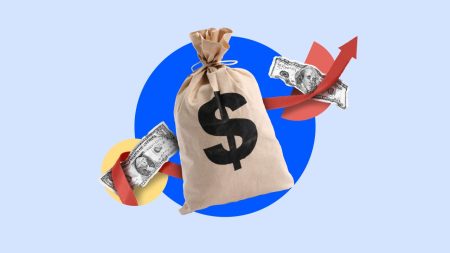10’000 Hours/Getty Images
Key takeaways
- It is possible to have multiple installment loans as long as you have the income and credit score to qualify.
- While multiple loans can be useful for covering large expenses, it can also have negative impacts on your credit score and finances.
- Consider alternatives to multiple loans, such as building up savings, before taking on additional debt.
It is possible to borrow multiple installment loans — largely because an installment loan is a closed-end debt product that can be used to purchase just about anything. Mortgages, auto loans and personal loans are all types of installment loans.
There is no set rule on how many installment loans you can have at once. As long as you have the income, credit score and debt-to-income (DTI) ratio that a lender requires, an installment loan from another lender won’t be held against you. That being said, it may be difficult to borrow a second loan from the same lender while you are still paying off the first.
How many loans can you have from the same lender?
Every lender has its own policies. Some may not allow you to borrow a second loan, while others will offer them — with caveats.
For example, some lenders, like Best Egg, require you to pay your current loan on time for a number of months before you qualify for a second loan. Lenders may also have aggregate loan or loan amount limits.
Here are a few options offered by lenders:
| Lender | Maximum number of loans | Maximum loan amount | Maximum combined limit |
|---|---|---|---|
| Best Egg | 2 | $50,000 | $100,000 |
| Lending Club | None stated | $40,000 | $50,000 |
| LendingPoint | 2 | $36,500 | None stated |
| Prosper | 2 | $50,000 | $50,000 |
| SoFi | 2 | $100,000 | None stated |
| Upgrade | None stated | $50,000 | None stated |
| Upstart | 2 | $50,000 | None stated |
What are the risks of having multiple personal loans?
While you may be able to qualify for a second or third personal loan, your credit score and finances may take a hit if you don’t consider the risks before you apply.
- Decrease credit score. When you apply for any loan, you may see a decrease to your credit score. This is because most lenders conduct a hard credit check, which temporarily lowers your score by a few points. And having multiple installment loans will increase your account balances, which may also have a negative impact on your credit.
- Increase DTI ratio. Multiple personal loans will naturally increase your DTI ratio. Unless you are able to balance payments with more income, your DTI will increase. This isn’t bad if your DTI is already low, but it may make it difficult to qualify for good rates in the future.
- Potentially higher interest. If you already have other debts, like credit cards, you may receive a higher interest rate. A lower credit score due to higher average balances, credit utilization ratio and DTI can both contribute to higher rates.
- Additional strain on your budget. A new monthly payment could make it more difficult to cover unseen expenses — or simply build up your savings. Carefully consider if another personal loan is necessary and how the payment will change your spending.
What are the benefits of having multiple personal loans?
Multiple personal loans can be a useful tool if you can handle the payments. You may benefit from another loan if you are still paying off a previous loan but need a few thousand dollars to cover a bill or large purchase.
The primary benefit of multiple personal loans is the ability to cover large expenses. If you have already taken out a personal loan and spent the entire amount, a second personal loan may be necessary to cover a different expense.
Since each loan can be used to pay for something different, multiple personal loans allow you to keep track of monthly payment amount and total interest paid to each lender for each expense. And when you are able, consider consolidating some debt — at a lower average rate — to simplify payments and potentially pay less.
How to qualify for another installment loan
When you apply for another personal loan, a lender will consider the same factors as when you applied the first time. Typical eligibility requirements include:
- Credit score. You’ll need a good credit score — typically defined as a FICO score of 670 or higher — to qualify for a lender’s lowest advertised rates. Some lenders may approve you with bad credit, but your loan will likely be more expensive.
- Income. Most lenders require you to have a certain amount of income to qualify. When you apply, you usually have to provide proof of income by uploading certain documents, such as your bank statements or pay stubs.
- DTI ratio. Your DTI ratio compares your monthly debt against your monthly gross income. A high DTI ratio can indicate to a lender that you may be overextended financially. On the other hand, a low DTI ratio generally leads to higher approval odds.
Are there alternatives to having multiple installment loans?
Even if you can handle the additional monthly payments a personal loan can bring, it may not be the best solution. Depending on the expense, you may be better off with an alternative, like a credit card, line of credit or simply building up your savings.
Credit cards
Credit cards are a good option to handle smaller expenses in addition to daily purchases. A credit card — especially one that offers travel rewards like cash back — will allow you to cover costs under $1,000. Most personal loans require you to borrow at least $1,000 to qualify.
That said, credit cards usually come with high annual percentage rates. If you don’t pay your card’s statement balance in full, you may have to pay a substantial amount of interest. An exception to this are cards that have no or low APR (annual percentage rate) promotional periods. However, once the promotional window expires, you’ll pay interest at the card’s normal rate, which is often high.
Lines of credit
Lines of credit are similar to credit cards. You have a credit limit, pay interest on what you borrow, then have access to the funds again after you repay. These are best for larger expenses that aren’t set in stone, like home renovations. They offer the same large amount as a personal loan without the strict monthly payment structure.
However, a major difference between lines of credit and credit cards is that lines of credit don’t have grace periods. As a result, you can’t pay off your line of credit’s statement balance in full to avoid paying interest.
Savings
Savings will ultimately be your best choice if you’re looking to reduce total cost. While building up the savings for a big expense will take longer, you won’t pay interest. In fact, a high-yield savings account or certificate of deposit (CD) will build interest over time.
So, if you don’t need money immediately, consider saving up for an expense instead of taking out a loan. One way to save for a goal is to open up a savings account and deposit a set amount of money in it each month.
The bottom line
It is possible to have multiple installment loans — but it isn’t always the best choice. Your income, credit score, other debts and current lenders will all impact your ability to borrow. Before you take out an additional installment loan, consider alternatives like credit cards or savings. If you decide to borrow another personal loan, compare current installment loan rates to make the most of your next loan.
Read the full article here
















